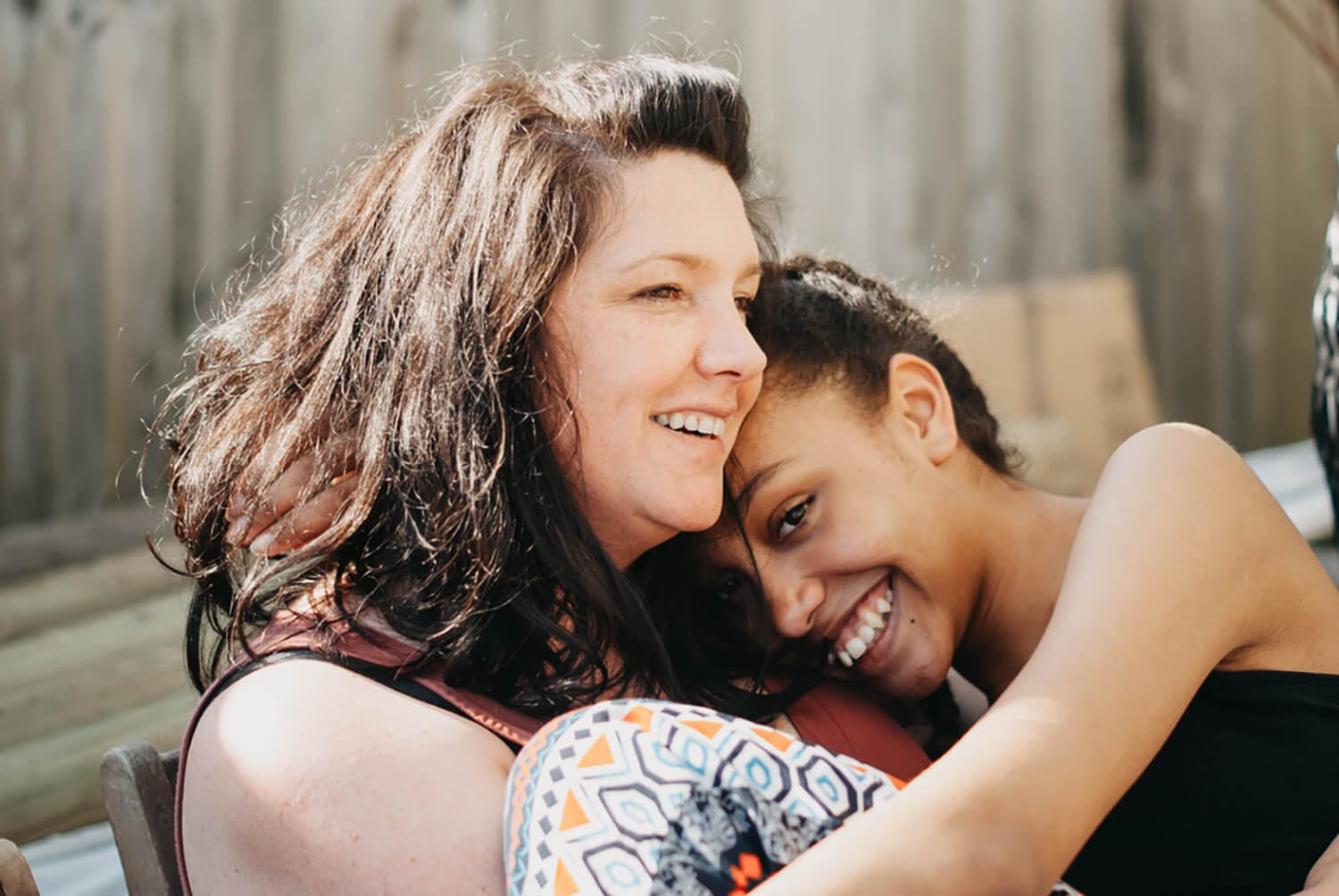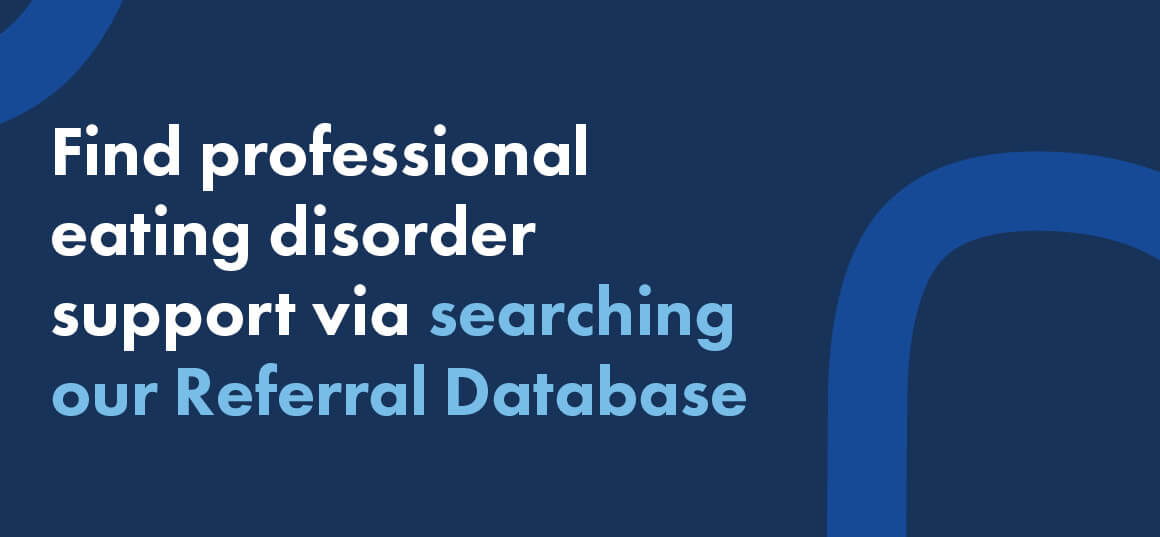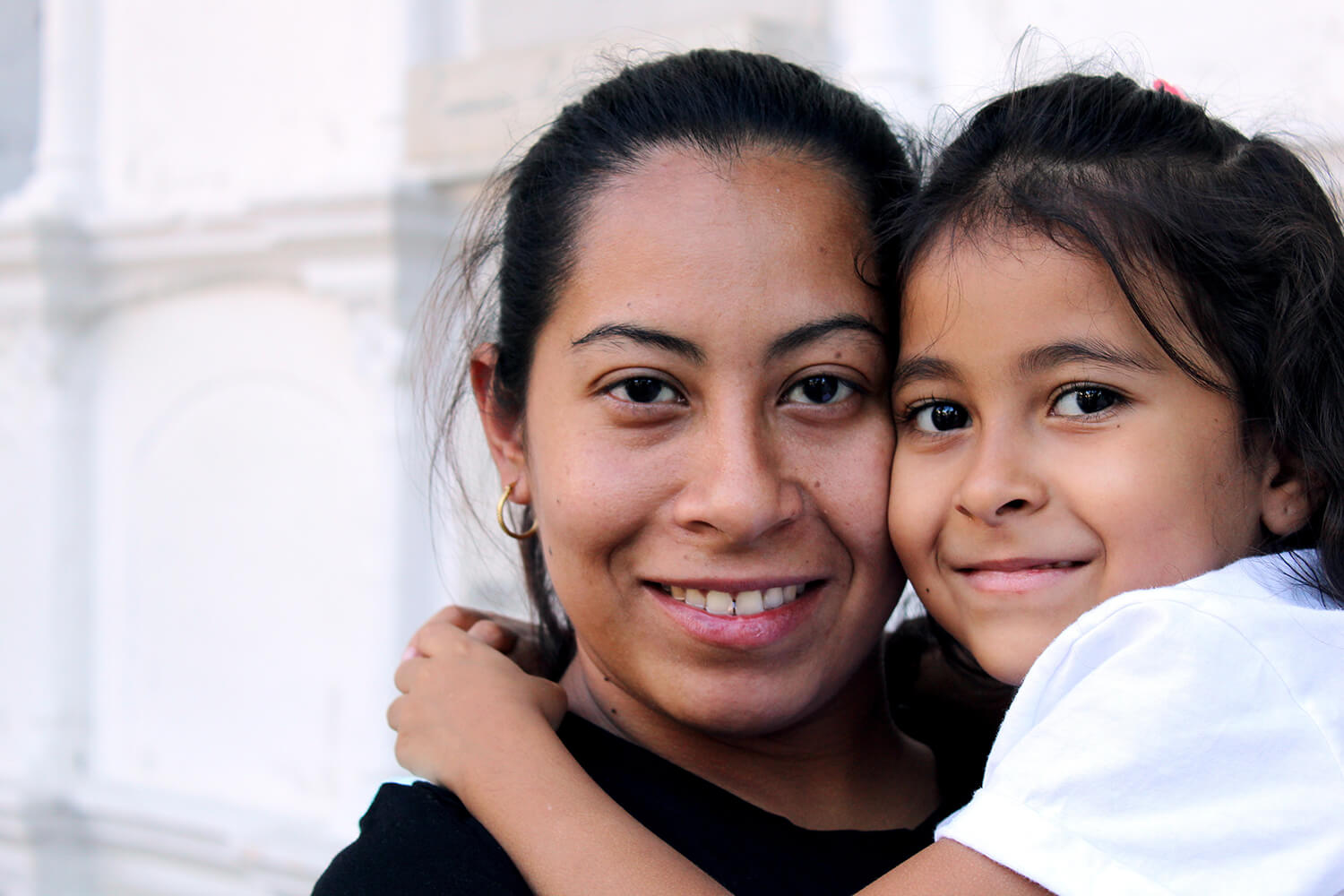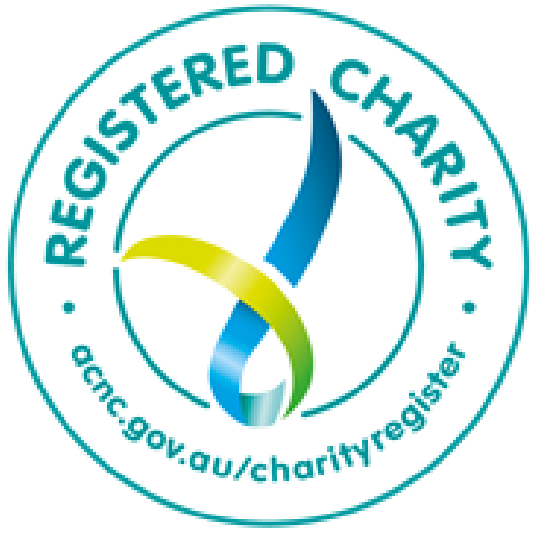In Depth with National Eating Disorders Collaboration director Beth Shelton
This episode will be published on Wednesday, 15th March.
Dr Beth Shelton is a psychologist and long-time director of the National Eating Disorders Collaboration (NEDC), which develops national standards for preventing and treating eating disorders and works actively to build the system of care.
As a highly respected professional in the field, we asked Beth to explain the different diagnoses for eating disorders, the possible causes, and what she believes constitutes “normal” eating.
First, Beth makes one thing clear: An eating disorder is a mental illness with serious physical and mental health consequences for the person affected. It causes a lot of dysfunction and suffering.
Though there are several separate diagnoses for eating disorders, they are actually more similar than they are different. On the road to recovery, many people move from one form to another. And different eating disorders often manifest from similar risk factors, for example, genetics or psychological profiles.
She also confirms that these conditions do not discriminate. We too often default to thinking in terms of an overly thin teenage girl, but an eating disorder can affect anyone; we cannot assume that it’s easy to see. An eating disorder is also not a choice – perhaps beginning a diet to lose weight initially may be a conscious decision, but once the eating disorder takes hold, the person affected has lost control of their health and needs support.
Beth puts it best: “No one I’ve ever worked with or spoken to about an eating disorder would ever choose one, or choose one for anyone else.”
Fortunately, she and numerous others in the sector are working tirelessly to help, not only for those with lived experience, but for their carers and loved ones too.
Find out more about Parliamentary Friends Group for Eating Disorder Awareness
Sam Ikin 00:05
We talk a lot on the show about eating disorders and disordered eating. But we don’t often go into what normal eating should look like. And to help us understand the difference a little bit better, we called in the longtime Director of the National Eating Disorder Collaboration (NEDC) Dr. Beth Shelton. The NEDC develops the national standards for preventing and treating eating disorders and Beth is a psychologist and a highly respected professional in the field. So we thought that she was possibly the top person in the country to ask, what’s the current definition of an eating disorder.
Beth Shelton 00:35
So an eating disorder is a mental illness with very serious physical and mental health consequences for the person who has it. Another way of looking at it is that an eating disorder is an entrenched pattern of disordered eating, and sort of thinking and feeling about body image and shape and weight and about yourself. That causes a lot of mental suffering and a lot of dysfunction in life, especially around food and eating, but also in terms of social life in terms of cognition in terms of getting on with life and having the life that you want to have.
Sam Ikin 01:11
As one of the country’s top experts on this, can you take us through what some of the more well known diagnoses of eating disorder might be? And then maybe let’s dig into some of the ones that we don’t know so well.
Beth Shelton 01:22
There’s a growing view in the world actually, that eating disorders, forms of eating disorder have more in common with each other than they have separations, because it’s often true that people might have one form of an eating disorder, such as bulimia nervosa or anorexia nervosa, but that actually changes over time. So, diagnoses are important in that they help the field and for people who have lived experience of an eating disorder, be able to identify what kind of pattern of eating it is, and what kind of pattern of difficulty that person has, so that we can target treatments, but there’s a lot that’s in common underneath and underlying those eating disorders. For example, increasingly, we’re understanding that a kind of genetic basis that anxiety and manage anxiety management underlies and is true for many people who have eating disorders. There’s become a kind of psychology and a preoccupation with weight and shape as a measure of self worth for that person. Another aspect that’s likely to be true right across the eating disorders is that the person restricts their intake that might take a number of kind of different forms across the eating disorders, but that there’s a kind of desire to over control the intake of food. These are some of the things that are true across diagnoses.
Sam Ikin 02:48
Yeah, well, it makes a lot of sense, Beth, so there’s eight or maybe even more different diagnoses for eating disorders at the moment, but could you tell us about some of the big ones and by big ones, I mean, some of the more predominant ones that we see a lot.
Beth Shelton 03:05
So I’ll take you through four different kinds of eating disorder diagnosis that differ from each other. But the eating disorder that people tend to have, in their minds when they immediately think of an eating disorder, is anorexia nervosa, because it’s the most commonly known eating disorder. And it’s because it’s the most obvious in terms of a person’s weight and shape and appearance. So in anorexia nervosa, the person has ideas and beliefs and feelings around weight and shape in the control of those things, which really overtake them and they are kind of driven in a sense to reduce the food intake that they have. And that creates both kind of reinforces for them that they sometimes are able to numb feelings in relation to that starvation kind of response, but it also tends to make people lose certain amount of cognitive function being at least to underweight and to sort of starvation response, which then kind of makes a person stuck in their cognitions. And sometimes it’s very difficult to see the big picture because the brain kind of shuts down and certain kind of way. And it also tends to lead to social isolation. So the Person has difficulty with being flexible enough to eat with other people and to be with other people. So you get this vicious cycle in a sense of restricting food and the effects of restricting food on the brain, in the body, and on the social life tending to reinforce that, if that makes sense. So the person is stuck in this pattern. It’s hard to get out of because of the distress that comes from changing that rigid pattern of eating.
Sam Ikin 04:49
So that’s anorexia nervosa, okay, and most people have heard of anorexia nervosa it sounds awful. And of course, the potential outcomes are horrible, but as you mentioned earlier, it’s not the most common eating disorder. What are some others that you can tell us about?
Beth Shelton 05:01
So let’s think about bulimia nervosa, which is probably the eating disorder that people think are second after they’ve thought of anorexia nervosa or they know about. So what happens in bulimia nervosa is again, the person has ideas, rigid ideas and overvalued ideas about how important weight and shape might be for them as a person, and really strong desire to control weight and shape. So they do the same thing. So they tend to diet or restrict their intake. And that dietary restriction naturally creates an enormous pressure on the person to eat because we are survival organisms, aren’t we? And we want to survive. So when the body feels itself to be underfed to be starving, it sends lots of signals up into the brain and into the, into the body itself to sort of eat get the person to eat. So the person then breaks their restriction. And because there have gone a lot of physiological pressure built up and psychological pressure built up around rules and all of that kind of thing, when they eat, it’s often possible for them to eat more than they wanted to. Or even if they don’t, they experienced then a sense that they have broken the rules and enormous distress sometimes around that, and fears that have to do with the need to rigidly control weight and shape and eating. So then the person might do an activity, what we’d call a compensatory activity. In order to kind of compensate for the fact that they’ve eaten, you get a kind of pattern of them doing compensatory behaviours, which is what we call them, and then feeling pretty bad about having done those compensatory behaviour… sorry about the eating and then doing the compensatory behaviour, and then going around the cycle again. So I’ve done my exercise now I sort of feel better, I’m back in control, I’ll restrict my intake again. But the cycle keeps repeating itself because it’s has sort of physiological and emotional and motivational kind of triggers that just keep happening. So again, you’re stuck in a cycle of behaviours and thoughts and feelings that are pretty painful and hard to be stuck in but but take some effort and some support to get out of.
Sam Ikin 07:15
They’ve got the word nervosa attached to them. So can you explain to us what that means?
Beth Shelton 07:19
And look the old diagnostic terms? And I guess they refer to the nervous system, but I can’t say much more than that.
Sam Ikin 07:27
Okay, well, thanks for clearing that up. Sorry, to break your flow, I think we’re up to two out of four.
Beth Shelton 07:31
So that’s number two. Number three is a more recent eating disorder diagnosis. I’m talking now about formal diagnosis. Binge eating disorder is a more recent formal diagnosis. And what happens in binge eating disorders, the person doesn’t necessarily restrict their intake, although they are likely to have and do have most of the time, some distorted and upsetting ideas around self worth weight and shape and, and needing to control those in order to feel like a good person. So typically, the person, the typical pattern will be the person would restrict a fair bit of food during the day and not eat very much, and they need a lot of food at night would be the typical pattern. But it doesn’t have to work that way. What a binge is, is not what people kind of think it is, it’s not like when I go to the staff room, and I say I had a real binge last night, I had a packet of Chocolate Royals, you know. That that’s comfort eating, because I feel sad or lonely or something like that. And just for the time of it, it’s fine. It makes me feel a little bit better in the short term, that’s just emotional eating and a certain amount of emotional eating, or spontaneous eating and eating sweet things when you’re with friends, it’s just part of normal eating. But a binge is a different thing from that. So in a binge, a person eats more than would be considered a kind of normal amount of food a fair bit more than they’re in uncertain discreet period of time, and experiences feeling really out of control in their eating. So it’s a very specific kind of eating. And that recurs often in the person’s life more than, say, three times a week. So the person is caught in this sort of style, probably of restriction, but not necessarily, and then the binge becomes something that it’s very hard to avoid. And it’s very hard to change from. And that’s partly because it provides a kind of emotional kind of cycle to it. And also, and also it becomes like a physiological habit. So binge eating is is quite painful for most people who who have it. And they often feel pretty awful afterwards. But the cycle sort of drags them and they come around and do it again. So it’s associated with really quite serious dysfunction and suffering for the person. And it’s much more serious than I think that anyone understood when we first started looking at this this pattern of behaviour.
Sam Ikin 10:01
Sorry to interrupt you again there Beth, but I understand binge eating disorder is hugely under diagnosed. Is that true?
Beth Shelton 10:07
Yeah, that’s true. And in fact binge binge eating disorder is likely to be it is that the more people have binge eating disorder than than certainly than have anorexia or bulimia. And interestingly, binge eating disorder is close to equal between males and females experienced binge eating disorder and across the age groups, and so often people who are older, so it really cuts across some of those stereotypes that we have. So when people think anorexia nervosa, they tend to think of a teenage girl, probably a teenager, a white teenage girl, you know. There’s a kind of cultural stereotype there. But that’s not true, what eating disorders really are eating disorders and mental illnesses that appear across the different cultural groups across different kinds of lifestyles across different occupations, everything that you can think of that makes people different. Eating Disorders still exist, and certainly across gender, and increasingly across gender.
Sam Ikin 11:10
Yeah, we’re starting to get an idea that it’s not so much just the young, wealthy white woman, which is the stereotype which were presented in the media the most often, but it does really cut through almost every demographic eating disorder diagnosis that is, and the stereotype is really quite unhelpful.
Beth Shelton 11:26
No, that’s right, exactly. So eating disorders affect people of all genders, ages, races, ethnicities, body shapes, and weights, sexual orientation, and socio economic status. And you can’t tell from the outside, if somebody has an eating disorder. It just is only that thing that we kind of carry as a shortcut as a cognitive shortcut in our brain, as you say, if that have that skinny kind of teenager.
Sam Ikin 11:51
I promise, I’m gonna let you finish explaining the diagnosis and answering the question that I initially asked. And I think I think you had one more.
Beth Shelton 11:58
So the last one I’ll talk about is a little bit different from the eating disorders I’ve talked about before. And that is called ARFID – avoidant restrictive food intake disorder. And ARFID is a little bit different in the person doesn’t necessarily or probably doesn’t even have any sort of real concerns or cognitions, around weight or shape, or the need to control food in that sense that the person is likely to be very, there may have been, for example, what used to be called a picky eater as a child. So the person may actually have an underlying lack of appetite biologically. They may have had a traumatic kind of episode with food and swallowing like a vomiting episode that’s kind of created almost like a phobic relationship with food. Or they may have highly kind of rigid things around which food they can eat or not. So you might have heard of people, for example, who will only white food, or people who will only sort of carrots and broccoli, or people who will only eat junk food. So highly specific set of preferences. And when it becomes a problem is when a person isn’t able to meet their nutritional needs, because they only they have such rigid sort of setups around their food. So ARFID can probably it often might start earlier have an earlier onset, then other eating disorders, and, as I say, it’s not associated with the same kind of distress around weight and shape but it can be very problematic in terms of the person being able to have a good life, because they can’t eat enough food to satisfy what they think be healthy.
Sam Ikin 13:40
So those are the four main diagnoses. And I think now we’ve identified something like eight, but like a lot of other mental illnesses, they’re also kind of, there’s a lot of overlap, and there was a lot of people who might swing from one to the other, can you sort of take us through the how they interrelate with each other.
Beth Shelton 13:59
So the diagnostic credit categories are useful in that they help us sort of name what’s going on for people which can be really, really useful, and to help us target treatments to a degree, but it’s also important to realise that all of these patterns of patterns of eating that just cause a lot of suffering to the person within them, and they are rigid and hard to get out of and that they are associated with a lot of mental preoccupation and obsession and behavioural sort of rigidity and, and also social isolation. A lot of the time a lot of the things go together.
Sam Ikin 14:32
We’ve said it often on the podcast that eating disorders are the mental illness with the highest fatality rate. And I guess it’s reasonably obvious why that might be but can you take us through some of the dangers? What is it about eating disorders that makes them such a dangerous condition for people to have?
Beth Shelton 14:50
So sadly, you’re absolutely right that mental illnesses have certainly one of the highest mortality rates of any mental illness, if not the highest and they also have a high level of chronicity, as in becoming very, very long term illnesses that compromise a person’s life dreadfully. So they’re life threatening on a number of levels in that way. But they also can be something that someone can have and then get completely well, you know. So that’s why our intervention, I guess, into them is just so important. Because what’s at stake for the individual person is a lot. It can be between having a perfectly normal life and having complete recovery and really a very compromised life or as you say, even death. So, yeah,
Sam Ikin 15:37
Yeah. And it seems to me, this is another area where that stereotype really does us another disservice where people don’t see the seriousness of eating disorders. And if they do, they only see the seriousness of anorexia nervosa. So I guess the question I’ve got for you here is, is it correct when I say people don’t tend to understand the seriousness of eating disorders?
Beth Shelton 15:57
I think that’s right. And I think yeah, so a lot of people don’t realise how serious eating disorders can be, and maybe have a bit of an idea that an eating disorder is a choice that a person is making. An eating disorder is never a choice, once you’re into it, it may be that you might have started off with dieting, and that has triggered an eating disorder. And the desire to to diet was a choice. But the eating disorder is never a choice. And no one I’ve ever worked with or spoken to about an eating disorder would ever choose one, or choose one for anybody else. There’s just far too much suffering and dysfunction associated with it. So their various biologically influenced illnesses, they’re not choices. If you’re eating normally, you’re pretty much choosing food, because for hunger and preference, and whatever your values are out food, and you’re happy to eat with other people pretty flexibly, you know, you know, typically feel a great deal of guilt or shame about eating. You might be absolutely delighted with your body, but you’ve got a reasonable degree, this is my body and you know, it does good things for me, and it’s gonna carry me through life, and I’m okay with it. And generally, you know, your weight’s at a reasonable kind of healthy level for you, if you’re eating well.
Sam Ikin 15:58
what are some warning signs for disordered eating or even their eating disorder?
Beth Shelton 16:17
Here are some of the things you might see. You might see them dieting or fasting. You might see them withdrawing from other people. You might see them doing exercise, which carries a sort of quite a compulsive kind of character to it, where they can’t, they’ll put other things, they’ll put the exercise before other things in their life. They might use steroids or things like that. They might change in their food preferences, so things that people used to like, and were always happy with all of a sudden, they don’t eat anymore, and they’re quite strong about that. But they might feel the need to kind of avoid situations or kind of, they feel a lot of guilt and shame around eating that might be evident to you if there’s someone that you know well. You might notice that they sort of over focus on food, weight and shape, you can see it comes into conversation a lot, there’s a lot of comparisons and ideas and everything about food, weight, and shape, recipes, all those sorts of things. You might just notice that they’re anxious when it comes to meal times, or whatever they might be avoiding, like, used to go to a cafe have a nice, you know, a muffin and a coffee, doesn’t happen anymore. You know, there’s avoidance. Notice that they’re checking their body all the time, you know, kind of checking to see pinching looking, you know, is what’s my body doing in terms of its appearance. You might you might find just that they’re less happy that they’re anxious, and they seem down and distant from you. And you might see that perhaps their weight goes up and down, or fluctuates or something like that. So they’re the classic symptoms, I guess, that you might notice.
Sam Ikin 18:59
From your work as a psychologist or as a clinician, I suppose, do you have any examples you could share with us?
Beth Shelton 19:05
Yeah, I was talking to a mum who had a little boy when I say literally was primary school, who ended up being diagnosed with anorexia nervosa. And I think he was a kid who was maybe a little bit over is most comfortable weight, and that can be a real trigger for kids. And he was like, right, I’m going to restrict my food and and I’m going to do really well. So he started, you know, dieting, I guess, and also started running around the oval, and he lost a bit of weight and everybody was saying to him, ah, that’s so good, you’re doing so well. His mother just feeling that he wasn’t that happy, though. And she went running with him one day around the oval and she said the moment that they started running around the oval, she knew something was wrong because he wasn’t running as a normal person, he was running in a kind of state that was really anxious and really compulsive and she knows her son well, you know, of course. So she could feel that there was a way he was engaging in that that just wasn’t right. And then she started finding out he wasn’t eating his lunch at school, and you know, it kind of build from there. But I guess when you’re close to someone, like you’re their friend of a really close sports person, or you’re their parent, you kind of know how they are normally, so you can feel it out. And if you have a sense that something is going wrong, it’s really worthwhile going to, you know, sort of raising it with them, and seeing if you can get them to talk to someone who can help them to sort of pull it out and see what needs to be done.
Sam Ikin 20:38
Wow, thank you for sharing, I guess that puts in a very real kind of setting for us. I appreciate that. The next couple of things I wanted to ask you about, Beth, were orthorexia and disordered eating, which are not technically in the eating disorder family or diagnoses, if you like. How do they relate? And can you shed a bit of light on exactly what they are for us?
Beth Shelton 20:58
Absolutely. So disordered eating is is really kind of on a spectrum, I guess, between what I just described it as normal eating, which is sort of social kind of appetite and a little bit of health and of that through to kind of eating disorder behaviour. So some of the things I just said are actually disordered eating. So extreme dieting, fasting, kind of just not being able to eat in a way that is a normal responsive pattern is disordered eating. All of those kinds of things are really serious, disordered eating their absolute red flags, and then moving into clinical eating disorder kind of territory, which I hope most people would recognise those if they know if they see them. Disordered eating and also body image concerns are well documented risk factors for doing extreme eating behaviours, and then triggering an eating disorder.
Sam Ikin 21:58
We’re running out of time a little bit here. But before we wrap up, I’d like to get your take on what a healthy relationship with food looks like, what do you think that’s supposed to be?
Beth Shelton 22:07
You’d feel free to get up in the morning and you know, you’ve got food you like and food you don’t like and you’ve got a vague idea of you know, what you want to include in that day’s eating. And you’re going to eat when you’re hungry, and you’re going to eat things that you like eating so that there’s this pleasure in it. And there’s a rhythm to it so that you’re probably eating breakfast, and you’re eating lunch, and you’re eating dinner so that you’re keeping your body and your mind well fueled on every level. And you don’t, you don’t feel ashamed or sort of guilty or your eating isn’t tied to trying to get to a sort of particular number or a kind of particular body shape. You just accept that I’m a human, so I’ve got needs to eat. And I’m going to balance healthy food with sort of yummy food and food that I have when I’m with grandma, because she made me a chocolate cake, and I’m going to have some, and you’re generally going to feel pretty much pretty vital, pretty, you know, good enough energy to do what I need to do. And you’re comfortable and spontaneous about your eating, you’re not going around in your head all the time thinking about what I should and shouldn’t be eating. It’s a bit like I think of it’s a bit like trying to train a kitten. You know, to jump through hoops like a kitten is meant to the kitten is meant to be what a kitten does as an organism our eating needs to be kind of some people say intuitive, but it needs to be kind of just part of our life that we do that we don’t over control because when we try and over control our eating, it can lead to all sorts of, you know, these patterns I’ve been describing these these diagnosis, these difficulties in his suffering, that’s actually really hard to shift. So don’t overthink it, just to your eating, you know, eat enough, eat regularly, eat adequately good things that are good for you and eat other stuff sometimes.
Sam Ikin 23:56
To find out more about what Beth does with the National Eating Disorders, collaboration, go to nedc.com.au And as always, if you need support right now or if you just like to know a little bit more about eating disorders called the Butterfly National Helpline on 1 800 33 4673 That’s 1 800 ED HOPE. You can also chat online or look at all of the resources on the website at butterfly.org.au. My name is Sam ikin. I’m the host and producer of Butterfly: Let’s talk. Our executive producer is Camila Becket. And if you like what we’re doing here, please leave us a rating and pop a little review in the app that you use to listen to this podcast. Until next time, thank you so much for your company.




















